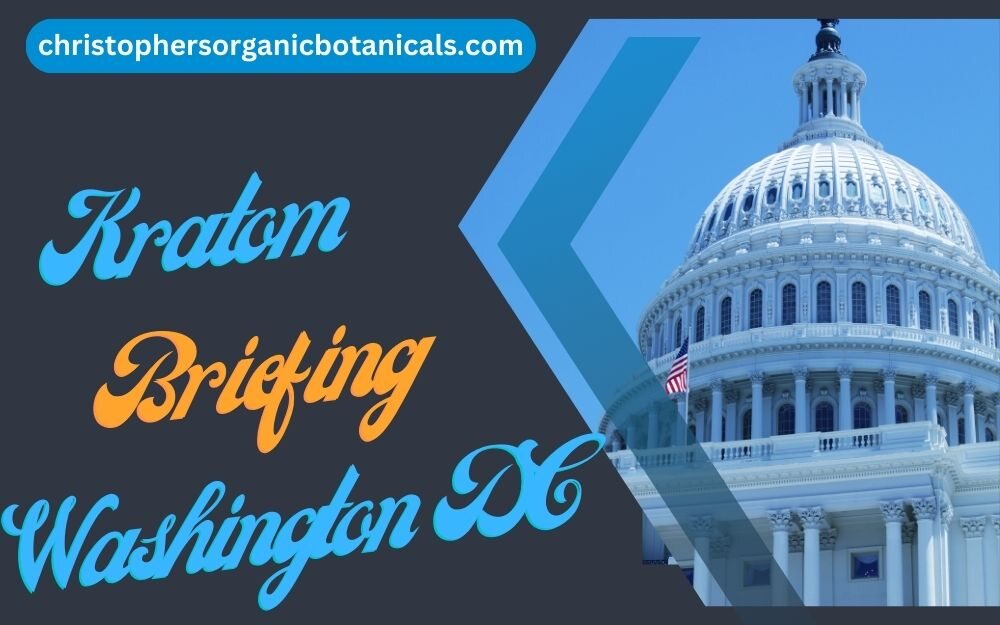Historic Congressional Kratom Briefing In Washington DC
Kratom advocates and consumers from various backgrounds and organizations came together in a unified effort to raise awareness and educate government staffers and officials about the benefits and potential risks associated with kratom. The gathering took place in a professional setting, where experts in the field of kratom science and policy shared their knowledge and insights with Congressional representatives and their staff members.
The Federal kratom science & policy briefing aimed to provide a comprehensive understanding of kratom, its chemical composition, and its potential medicinal properties. Experts discussed the various alkaloids present in kratom leaves and their potential effects on the human body. They also delved into the historical and cultural significance of kratom, highlighting its traditional use in Southeast Asia.
The briefing also addressed the ongoing debate surrounding it’s legal status and potential regulatory measures. They emphasized the need for responsible regulation that ensures product quality and consumer safety while preserving access to kratom for those who rely on it for their well-being.
Government staffers and officials had the opportunity to engage in open discussions and ask questions to deepen their understanding of Mitragyna Speciosa and its potential impact on public health and safety. The event fostered a collaborative environment where different perspectives were shared, allowing for a more informed and balanced approach to kratom policy.
Overall, the Federal kratom science & policy briefing served as a platform for advocates and consumers to advocate for the responsible use and regulation of kratom. By bringing together experts, government representatives, and concerned individuals, the event aimed to bridge the gap between scientific research, public perception, and policy-making, ultimately working towards a more comprehensive and evidence-based approach to kratom regulation.
The featured speakers
- Dr. Nora Volkow, Director of NIDA
- Dr. Jack Henningfield, Pinney Associates and former scientist at NIDA
- Dr. Kirsten Smith, Johns Hopkins School of Medicine and former NIDA scientist
- Dr. Marilyn Huestis, Senior Fellow at the Institute on Emerging Health Professions, Thomas Jefferson University and former NIDA scientist
- James Carroll, Former Director of the White House Office of National Drug Control Policy
The event that took place was truly remarkable and left a lasting impression on all those who attended. It was a gathering of like-minded individuals who were passionate about kratom and its potential benefits. The turnout was overwhelming, with a multitude of supporters from various backgrounds and walks of life coming together to engage in meaningful discussions with their elected officials.
The atmosphere was electric, filled with excitement and anticipation as people eagerly shared their personal stories and experiences. Supporters were armed with a wealth of knowledge and information, ready to educate and advocate for the plant’s legality and accessibility.
The event provided a platform for open dialogue and exchange of ideas. Attendees had the opportunity to engage in one-on-one conversations with their elected officials, expressing their concerns, sharing scientific research, and highlighting the positive impact it has had on their lives. It was a chance to bridge the gap between the kratom community and those in positions of power, fostering understanding and cooperation.
During the discussions, participants thoroughly explored the scientific and medical aspects of kratom, delving into its various components and their effects on the human body. Experts from diverse fields such as pharmacology, toxicology, and neuroscience were present, lending their extensive knowledge and experience to the conversation.
These experts provided valuable insights into the potential therapeutic properties of Mitragyna Speciosa. They discussed the active compounds found in kratom, such as mitragynine, and their interactions with receptors in the brain and body.
Furthermore, the discussions explored the potential risks and side effects associated with kratom use. Experts highlighted the importance of understanding proper dosage, potential drug interactions, and the potential for addiction or dependence. They emphasized the need for further research to fully comprehend the long-term effects and safety profile of kratom.
The discussions also touched upon the ongoing debate surrounding the legal status of kratom. Experts shared their perspectives on the regulatory challenges and the need for evidence-based policies to ensure the safe and responsible use of kratom.
Overall, the presence of these knowledgeable experts enriched the discussions, providing a comprehensive understanding of kratom’s scientific and medical aspects. Their expertise helped to dispel misconceptions and fostered a more informed dialogue on the potential benefits and risks associated with kratom use.
Conclusion
The event also served as a platform for raising awareness about the misconceptions surrounding it. Supporters debunked myths and misinformation, emphasizing the need for accurate and unbiased information to guide policy decisions. It was a call for evidence-based decision-making, urging elected officials to consider the scientific research and the voices of those who have benefited from kratom.
Overall, the event was a resounding success. It brought together a diverse group of individuals united by their belief in the potential of kratom. The discussions were productive, informative, and passionate, leaving a lasting impact on both the supporters and the elected officials. It was a step forward in the fight for kratom’s recognition and acceptance, and a testament to the power of grassroots advocacy.






0 Comments